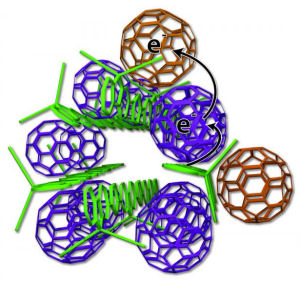
The black mineral stain commonly found on rocks turns out to be a very simple and effective catalyst for replicating what photosynthesis does – splitting water into hydrogen and oxygen. The discovery, reported in Nature Chemistry, was made by scientists from Monash University, Australia, with the assistance of researchers at the University of California – Davis.
To find long-term solutions for the energy crisis, scientists around the globe have been studying a range of complex catalysts designed to mimic those that plants use to split water using sunlight. But the new study shows that there might be much simpler alternatives to hand.
“The hardest part about turning water into fuel is splitting water into hydrogen and oxygen, but [we] seem to have uncovered the process, developing a water-splitting cell based on a manganese-based catalyst,” Monash’s Leone Spiccia said.
The catalyst that Spiccia indentified is birnessite, which can be seen in nature as the black stain coating many rocks. Manganese can exist in a number of oxidation states and the manganese in birnessite cycles between the manganese-II state to manganese-IV.
It is hoped the research will ultimately lead to the development of cheaper devices to produce hydrogen. “This may provide important insights into the evolution of Nature’s water splitting catalyst found in all plants which uses manganese centres,” said co-researcher Rosalie Hocking. “Scientists have put huge efforts into making very complicated manganese molecules to copy plants, but it turns out that they convert to a very common material found in the Earth, a material sufficiently robust to survive tough use.”
Related:
Electricity generated directly from photosynthesis
Artificial leaf generates electricity
Virus improves solar cell efficiency
Novel solar cells utilize light’s magnetic properties


















Comments are closed.